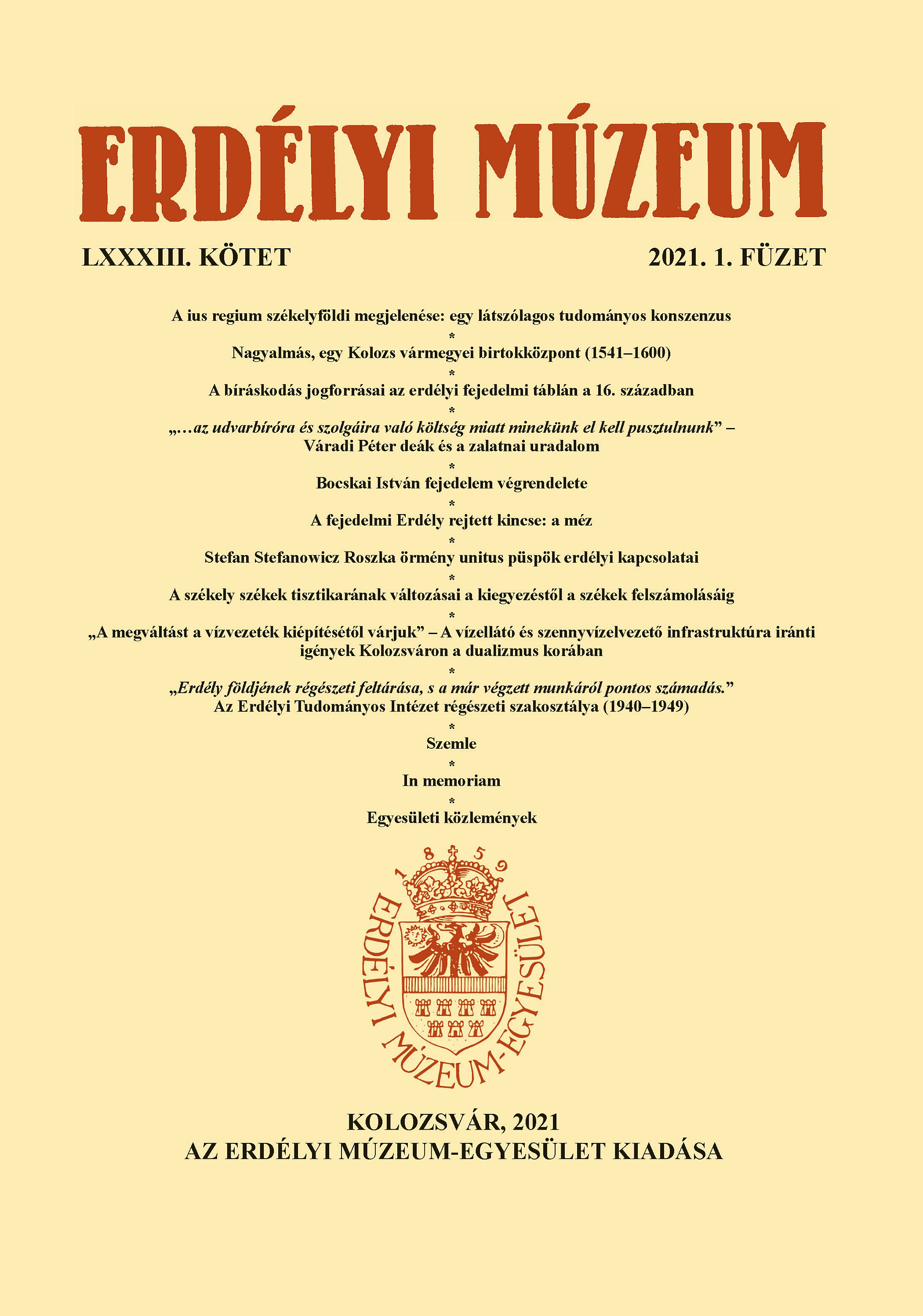„Erdély földjének régészeti feltárása, s a már végzett munkáról pontos számadás.” Az Erdélyi Tudományos Intézet régészeti szakosztálya (1940–1949)
“The archeological exploration of the land of Transylvania and the accurate report of the work accomplished so far.” The Archaeological Department of the Transylvanian Scientific Research Institute (1940–1949)
Author(s): Gabriella M. LezsákSubject(s): Archaeology, Social history, WW II and following years (1940 - 1949)
Published by: Erdélyi Múzeum-Egyesület
Keywords: Transylvanian Scientific Research Institute; Archaeological Department; Archaeological School of Kolozsvár; Daco-Roman continuity theory;
Summary/Abstract: In the following paper I tried to summarize the activity of the Archaeological Department of the Transylvanian Scientific Research Institute (Erdélyi Tudományos Intézet, ETI) led from its formation until its end (1940-1949) by Gyula László, one of the most emblematic figures of Hungarian archeology in the 20th century. The significance of the department lies not only in its remarkable archeological activity, but also in reinforcing Hungarian identity through the purposeful development of archeology as a field of national importance. Even though the leading archeologists of the Horthy Era joined the defining historians of the age in resisting the ideas of national-socialism, Gustaf Kossinna’s theory of “settlement archeology”, involving the identification of archeological cultures with ethnic groups made an influence on the local archeologists as well, especially in the context of the sharpening debate about the historical claim on Transylvania, following the Treaty of Trianon. While Romanian archeologists argued for the theory of Daco-Roman continuity, the Archeological School of Kolozsvár focused on its disproval, the unearthing of Hungarian vestiges in Transylvania, and on demonstrating migration and discontinuity. However, the perception of the interpretation of archeological artefacts was also influenced by the so called “Rural Movement”, facilitating the creation of a third-way, independent, folkloristic perspective.
Journal: Erdélyi Múzeum
- Issue Year: LXXXIII/2021
- Issue No: 1
- Page Range: 129-143
- Page Count: 15
- Language: Hungarian

